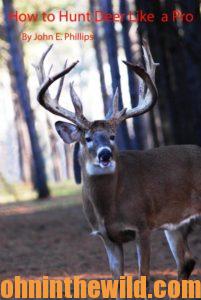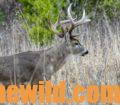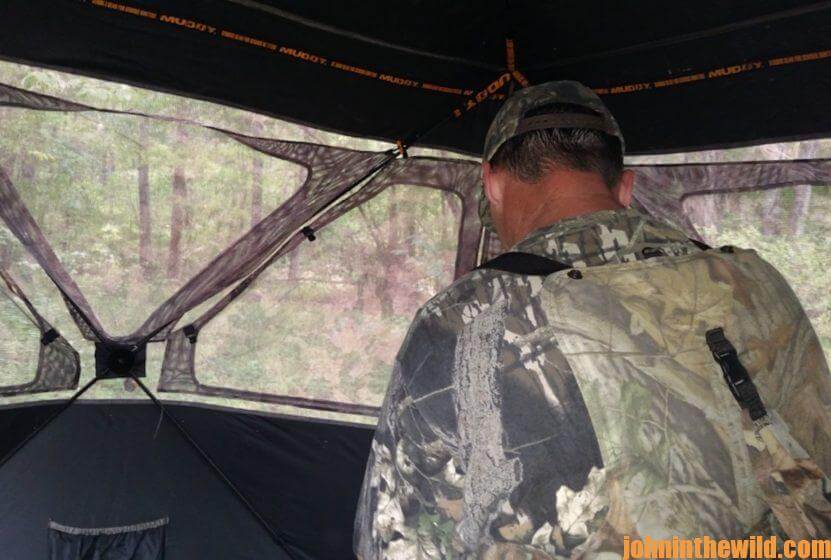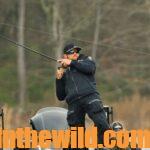Editor’s Note: Using a black magic marker and a gray work jumpsuit, Jim Crumley of Buchanan, Virginia, drastically changed the nature and purpose of camouflage when he created the first sportsman’s camouflage – Trebark. Crumley’s idea that vertical patterns best represented objects in the forest and created an illusion of a tree stump or the trunk of a tree brought into being a new term, “sportsman’s camouflage.” Crumley has been in love with bowhunting deer all his life.
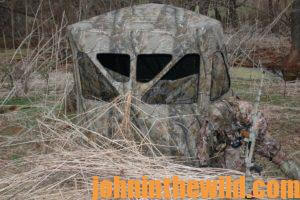 Some hunters don’t like to climb trees, and/or physically can’t climb trees. For these hunters, ground blinds can be very effective. Also, you can use ground blinds when an area has no trees large enough to hang tree stands, or where a tree stand will be so obvious you’ll spook the deer. Set-up a ground blind in a place where you know the deer will show-up like the edges of fields, funnel areas, creek crossings, etc., weeks before you plan to hunt from it to allow the deer to become familiar with it.
Some hunters don’t like to climb trees, and/or physically can’t climb trees. For these hunters, ground blinds can be very effective. Also, you can use ground blinds when an area has no trees large enough to hang tree stands, or where a tree stand will be so obvious you’ll spook the deer. Set-up a ground blind in a place where you know the deer will show-up like the edges of fields, funnel areas, creek crossings, etc., weeks before you plan to hunt from it to allow the deer to become familiar with it.

Tactics for Ground Blinds
- Watch the Wind’s Direction: To hunt successfully from a ground blind, whether it’s made of natural foliage or cloth, be aware of wind direction. Because you’re on the ground, you’re hunting at the same level as the deer’s nose, which means you’re much-more likely to spook deer with your human odor than you will when you’re up in a tree stand. Never hunt from a blind on a day when the wind direction is wrong.
- Camouflage a Blind: If you’re using a cloth ground blind, be sure to put brush around and on the top of the cloth. Cloth blinds move in the wind and present a solid wall of material. Very few things occur naturally in the woods that are as big and as flat as a ground blind or that move like a ground blind sways in the wind. However, if you break-up that solid wall of material with brush, then you’ll be better camouflaged. Too, the deer is less likely to spot you. Even if the blind does move in the wind, that brush on the outside of the blind will mask the blind’s movement.
- Consider Where to Put a Ground Blind: Ground blinds are productive when hunting in clear-cuts by giving you a place to hunt and a way to hunt when no trees are available for a tree stand. Another advantage to using a ground blind is comfort. You can go into your blind before daylight and stay until after dark. Ground blinds give you much-more freedom to move without being seen than tree stands do. A ground blind particularly is suitable for young hunters who often have difficulty sitting still for a long time in a tree stand.
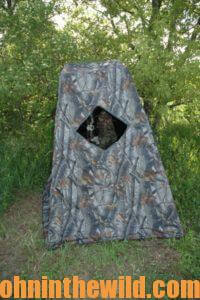 Also ground blinds are excellent for hunting water holes in the West. Anywhere you can’t set-up a tree stand, more than likely you will be able to put a ground blind, if the wind’s dominant direction is right. Although occasionally I must hunt from a stand immediately after putting it up, especially on public lands, I much prefer setting-up stands or blinds days or even weeks before hunting. Then the deer will become accustomed to the stand or the blind’s presence. Once on an Alabama hunt, I set two stands near a live-oak feeding area to allow me to hunt it according to wind direction. The next morning I watched a buck feed toward one stand, look-up at it and spook from the stand that I wasn’t in at the time.
Also ground blinds are excellent for hunting water holes in the West. Anywhere you can’t set-up a tree stand, more than likely you will be able to put a ground blind, if the wind’s dominant direction is right. Although occasionally I must hunt from a stand immediately after putting it up, especially on public lands, I much prefer setting-up stands or blinds days or even weeks before hunting. Then the deer will become accustomed to the stand or the blind’s presence. Once on an Alabama hunt, I set two stands near a live-oak feeding area to allow me to hunt it according to wind direction. The next morning I watched a buck feed toward one stand, look-up at it and spook from the stand that I wasn’t in at the time.
- Understand How Tree Stands and Ground Blinds Can Make Your Deer Hunting More Successful: To sum-up using tree stands and ground blinds for bowhunting, I believe you should consider many factors before you decide on which you will use. Look at the terrain. Determine what type of tree stand or ground blind fits the terrain best. Study the kinds of trees in your hunting area to decide which type of tree stand will be the easiest to attach to those trees. Learn the deer-movement patterns on the land you hunt to determine if you can drive to a productive stand site, and whether or not you need a ladder stand or a permanent stand. Or, if the deer are holding in thick cover like a clear-cut, you may be more successful with your bow by using a tripod or a ground blind.
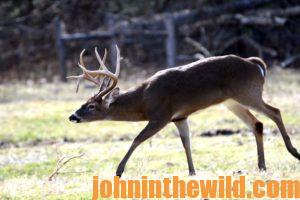
In your pre-season scouting, you should look not only for a place where you can get a shot at a deer, but study the area and the trees available there to decide what type of tree stand or ground blind you can use to hunt that region the most efficiently. Often I need at least two and sometimes three different kinds of tree stands to hunt one area with my bow. However, if I don’t have an option of utilizing several types of tree stands and only can take one stand with me from which to hunt, I prefer my hanging stand and tree steps, due to the versatility of these products.
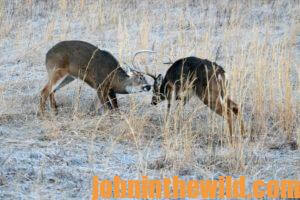
To learn more about hunting deer, check out John E. Phillips’ book, “How to Hunt Deer Like a Pro,” available in Kindle, print and Audible versions at (http://amzn.to/YpoQHA). You may have to copy and paste this link into your browser. (When you click on this book, notice on the left where Amazon says you can read 10% of the book for free, and you can hear 10% for free).
On the right side of the page and below the offer for a free Audible trial, you can click on Buy the Audible book. To see more of John’s deer-hunting books, visit www.amazon.com/author/johnephillips.